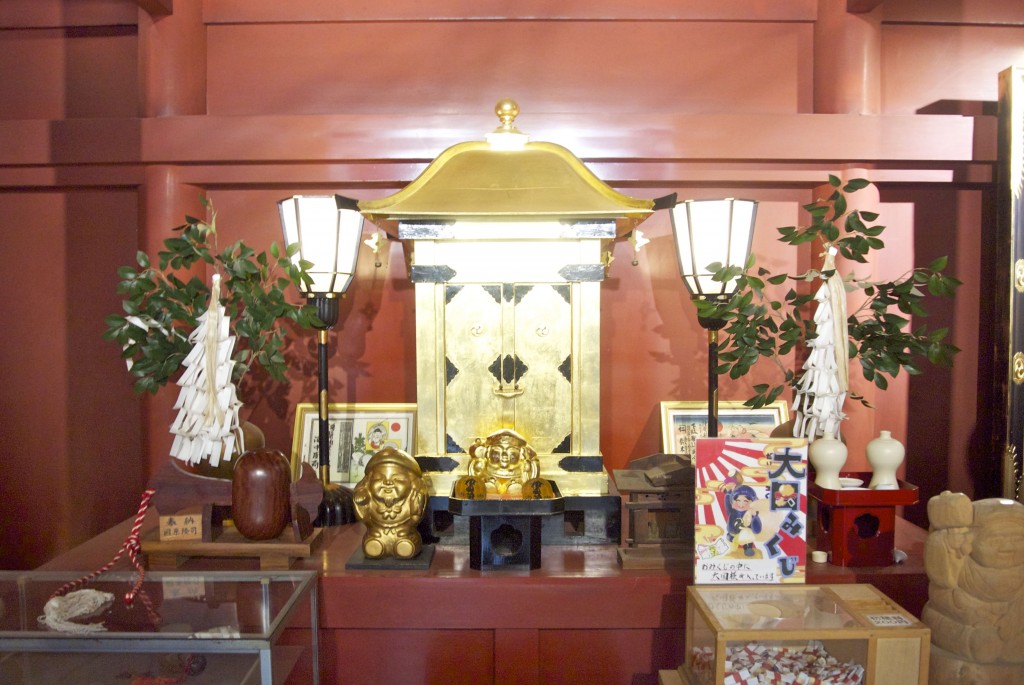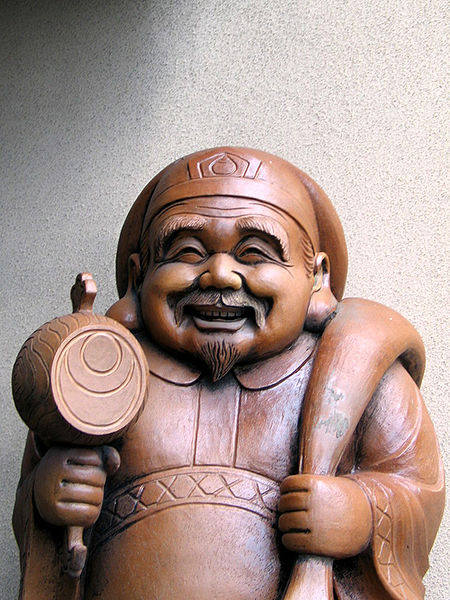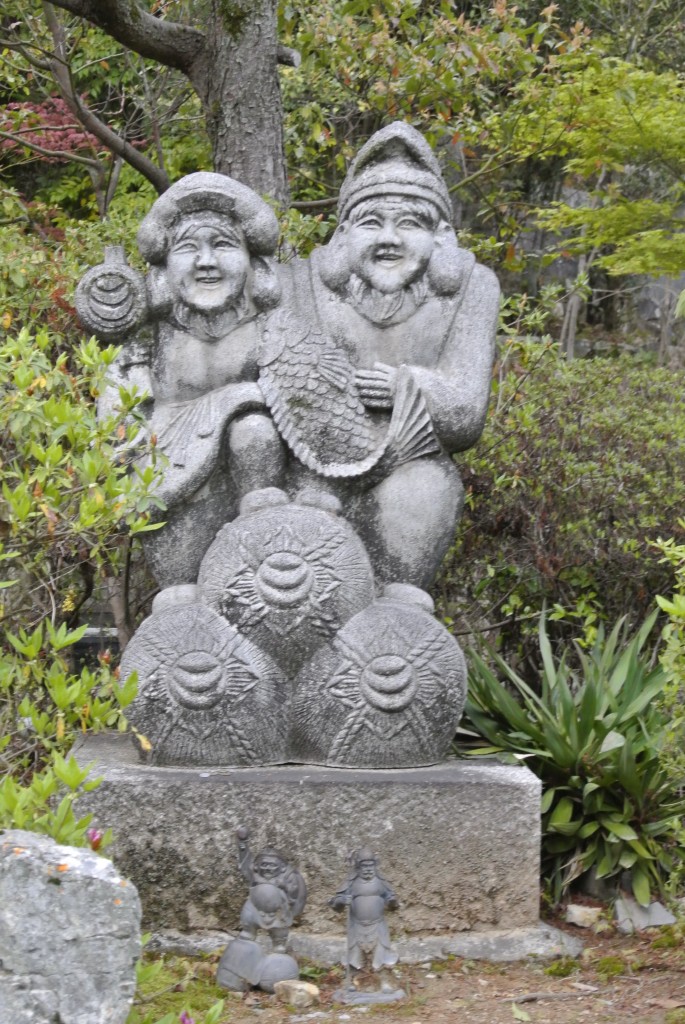Daikoku (aka Daikokuten) is one of Japan’s most popular deities. He’s a jolly fellow with a sack of treasure and a mallet. As such, he’s probably the most well-known of the Seven Lucky Gods (shichifukujin). Although he’s very much a syncretic deity, and owes his popularity to Buddhism, he’s often conflated with the important Izumo kami, Okuninushi no mikoto, because of a chance correspondence between their names (the kanji for ōkuni 大国 can also be read as daikoku). There are some shrines, such as Futarasan Jinja at Nikko, that have a whole Daikokuden given over to worship of the kami.

Daikoku worship hall at Futarasan Jinja in Nikko
To most people Daikoku is indelibly Japanese, but like so much in Shinto, once you peel away the layers you begin to find imports and immigrants behind the indigenous facade. But who would have imagined that Daikoku could possibly have anything to do with the mighty Shiva, the Hindu god of destruction. It seems most unlikely!
Yet here is Wikipedia in succinct terms: “Daikokuten evolved from the Hindu deity, Shiva. The name is the Japanese equivalent of Mahakala, another name for Shiva.”
In his authoritative website on Japanese religions, Mark Schuhmacher has this to say:
Originally a Hindu warrior deity named Mahakala (an emanation of Siva, but later adopted into the Buddhist pantheon and appearing by at least China’s Sui dynasty (581-618) in Buddhist texts.
Daikokuten, or Daikoku, is widely known in Japan as the happy-looking god of wealth, farmers, food, and good fortune, although in earlier centuries he was considered a fierce warrior deity. The oldest extant image of Daikokuten in Japan is dated to the late Heian period (794-1185) and installed at Kanzeonji Temple (Fukuoka prefecture). The statue depicts the deity with a fierce expression, reminding us of his Hindu origin as a war god.
However, since the 15th century, Japanese artwork of this deity starts showing him as a cheerful and pudgy deity wearing a peasant’s hat and standing on bales of rice, carrying a large sack of treasure slung over his shoulder and holding a small magic mallet.
Images, paintings, and other artwork of Daikokuten can be found everywhere in modern Japan, showing him alone, paired with Ebisu (considered his son in many traditions), or grouped with the Seven Lucky Gods.
And here is what the Kokugakuin encyclopedia has to say on the subject: “Daikokuten’s identity is said to have originated in the Indian deity Mahākalā (“Great-Black”), variously described as an incarnation of Shiva known for destruction, or else as an incarnation of Daijizaiten (an alternate Japanese name for Shiva) who acts as a god of war.
In these forms, Daikokuten was sometimes depicted as a figure with three scowling faces and six arms. On the other hand, Buddhist temples in India enshrined Daikokuten on kitchen pillars as a god of fortune, depicting him as a black-colored, two-armed figure holding a sack. It was this cult of Daikokuten which the Tendai-sect founder Saichō introduced to Japan. As esoteric Buddhism was transmitted to China and Japan, Daikokuten came to be depicted with a pleasant facial expression in place of the fearsome scowl of earlier figures.”
So to summarise: Daikoku (literarlly, Great Black) started life as a form of Shiva associated with negativity, but over time he transformed into a jolly figure associated with prosperity. Did cultural values play a part in this? Perhaps all that toiling in the rice fields paid off in material and spiritual rewards. Perhaps hard work and the ‘gambaru’ spirit helped make him contented and rich. Or perhaps Daikoku is just a case of wishful thinking, a representation in human form of the wishes harboured deep within us all…
Daikoku and Ebisu, often represented as a pair or even father and son



Leave a Reply